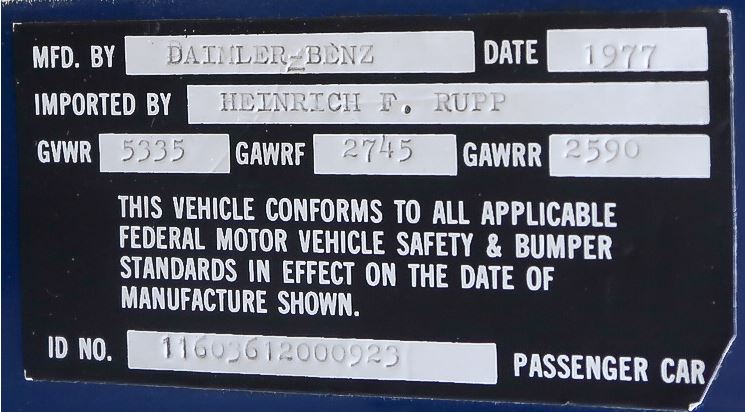Greetings to all! This is my first post, hope it's in the right place...
My question is how the USA importation and gray market worked in those days and what mods were required to import. The specific 6.9 in question is a very nice 1977 car, #923. By all indications it's an unmodified Euro version (headlights with wipers, euro climate control layout, euro tail lights, bumpers, market designation code 5 on build plate (Europe outside Germany)). The only alteration seems to be a MPH speedometer.
The car also has a USA importation sticker indicating compliance with federal requirements. The only USA concession seems to be the speedo. Can anybody clariy what this means about the import channel or other modifications that would have been required at the time? Most puzzling to me is that the bumpers are certainly
not US spec and I can't imagine any sane person retrofitting a US model with the euro climate control. Seems more like the importer just changed the speedo and asserted compliance or that sticker is fake. Who knows?
Any insights would most welcome. Thanks in advance.

Dave